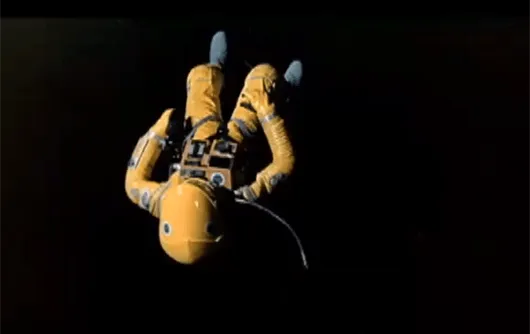When watching a science fiction flick, it can be hard to determine what time in the future it is set, although this is a usually an integral part of the movie. However, it is often obvious in which year the movie was made. The combination of costumes, cinematography, CGI, and content create an overall feeling that immediately makes you aware of when it was made. The celebrity actors are a dead give-away as well. Even the CGI capabilities of this post-Avatar-era are not enough to fool us- compare Jeff Bridges in Tron and Tron: Legacy.
The future depicted in these films always seems to follow the present in a linear fashion, while the actual future turns out to be wild, chaotic and unpredictable. Instead of an overview of correct predictions, the legacy of science fiction movies represents an interesting insight in the thoughts of people throughout the years. How the moon is depicted can be particularly telling of a given era's mindset. In Le Voyage dan la Lune, for example, the moon is shown as having a lush Earth-like ecosystem that makes for a grand adventure. In Duncan Jones' Moon, the moon has become much more like a true wilderness, isolated and uncaring.
It makes me wonder how will the moon be presented in science fiction movies over the next decade. Will it be overrun with nanotechnology, restored to a next natural landscape, or be another base for Jeff Bridges?
Below are some examples about traveling to the moon, from different eras. What time is the setting? Hard to determine. What year is it made? Much easier.
Georges Melies - Le Voyage dan la Lune (1902)
Stanley Kubrick - 2001: A Space Odyssey (1968)
Duncan Jones - Moon (2009)


Comments (0)
Share your thoughts and join the technology debate!
No comments yet
Be the first to share your thoughts!